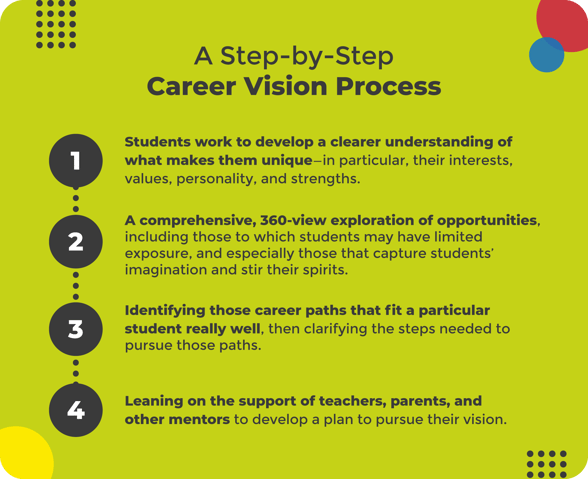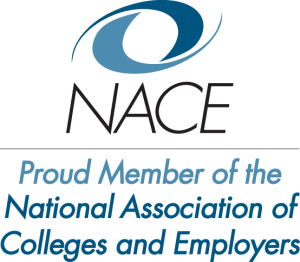Building a Career Vision: A Strategy to Re-engage Disengaged Students
The Why Behind PathwayU
PathwayU was built to help students find their purpose in life. Our platform is based in science and academia. Our mission is to help students and universities create pathways for all. Our co-founders, Bryan Dik and Kurt Kraiger, are the brains behind the technology and created this series to help explain the why behind PathwayU. Click here to download our e-book and set up a custom tour here.
Building a Career Vision is Crucial for Disengaged Students
Throughout the COVID-19 pandemic, educators have repeatedly expressed concerns that a high proportion of students essentially quit after switching to remote learning. Anecdotal evidence supported the concern as valid, but new empirical evidence is beginning to shed light on the magnitude of the program—and on which students have been especially vulnerable to disengaging from their studies.
Many students have become disengaged due to the shift to remote learning, @JobZology says that establishing a student’s career vision can help them stay engaged and on the right path:@JobZology
Disengagement Effects are Widespread and Disproportionate
A new survey of 58 mental health professionals in K-12 schools in our neck of the woods (four school districts in Colorado's Front Range, to be specific) found that by May and June of 2020, 25% of students had become disengaged.
DYK? By May and June of 2020, 1 in 4 of students had become disengaged.
Some withdrew to the point of having no contact at all with their schools. The study, led by Colorado State University researchers Drs. Tiffany Jones and Anne Williford, also found that the switch to remote learning exacerbated existing disparities, as a disproportionate number of low-income students and students of color became disengaged.
Because low-income populations and people of color are more likely to be employed in low-paying frontline jobs, parents’ availability to serve as consistently accessible learning coaches at home was compromised—and their greater chances of exposure to COVID-19 added another layer of stress.
“The switch to remote learning exacerbated existing disparities, as a disproportionate number of low-income students and students of color became disengaged.”
The lasting impact of this level of disengagement on these cohorts of students will be revealed as time unfolds, but the pre-pandemic effects of educational disengagement are well-known and point to an array of poor life outcomes ranging from poverty to incarceration.
A Career Vision can Help Disengaged Students
Helping students recover from disengagement—or stated positively, promoting student engagement—is, of course, a complex challenge that requires multiple solutions. Threats to student engagement are, after all, influenced by structural, political, training-related, and symbolic factors, and addressing the problem requires interacting on all of those levels.
There is no “silver bullet” fix, and the path forward is a puzzle with many interlocking pieces. However, it strikes me that a key piece of the puzzle is often overlooked. That piece involves developing a career vision.
@JobZology says there’s no perfect way to re-engage students in this new learning environment. But a solid career vision can give a student direction and clarity into their future. Here’s why:@JobZologyA career vision is simply a student’s view of a preferred vocational future, an occupational aspiration that a student can look forward to, get excited about, and derive purpose from. It is something that, in turn, students can connect with their current learning goals.
“A key piece of the puzzle is often overlooked. That piece involves developing a career vision, an occupational aspiration that a student can look forward to, get excited about, and derive purpose from.”
As students progress through the educational system, their career vision naturally will evolve, likely morphing from an exotic dream to a progressively more informed plan.
Effective career visions are developmentally appropriate, recognizing that young students are only beginning to form the basis of their vocational self-concept by learning about their personal strengths, whereas older students begin to engage in an exploration process marked by crystallizing, specifying, and actualizing a career choice.[1]
How to Establish a Student’s Career Vision
Establishing a career vision forms the basis of student motivation to pursue that vision, which informs goal-setting and achievement, both hallmarks of engagement. A well-articulated career vision can have a powerful effect on student outcomes for these reasons.
Failure to make out at least a tentative career vision, however, can make it difficult for students to connect their current learning to their desired future. As a result, learning may lack a point or a purpose, as far as students are concerned, hastening the path toward disengagement.
A Step-by-Step Career Vision Process:

Many students, especially low-income students and students of color, face severe constraints that can disrupt this process at every step. Yet, low-cost tools can help facilitate a visioning process even in the face of such constraints.
The Best Way to Develop a Career Vision
PathwayU provides an easily accessible assessment platform for assessing student interests and values, suggesting good-fitting career paths to further explore, and providing tools and support for making informed choices.
Research on career interventions that incorporate PathwayU reveals that their effectiveness is equivalent across gender and race categories and that lower-SES students report the most positive benefits.
When used to spur connections with trusted, important others in students’ lives, such a platform can help address one key part of the broader set of solutions for increasing student engagement.

[1] I am borrowing language here from Donald Super’s Life-Span, Life Space Theory of Career Development. For an overview, see Hartung, P. J. (2020). Life-Span, Life-Space Career Theory and Counseling. In R. Lent & S. Brown, Eds., Career Development and Counseling: Putting Theory and Research to Work (pp. 95-127). New York: Wiley.
-1.png?width=288&height=67&name=PathwayU_PGLogo%20(1)-1.png)



